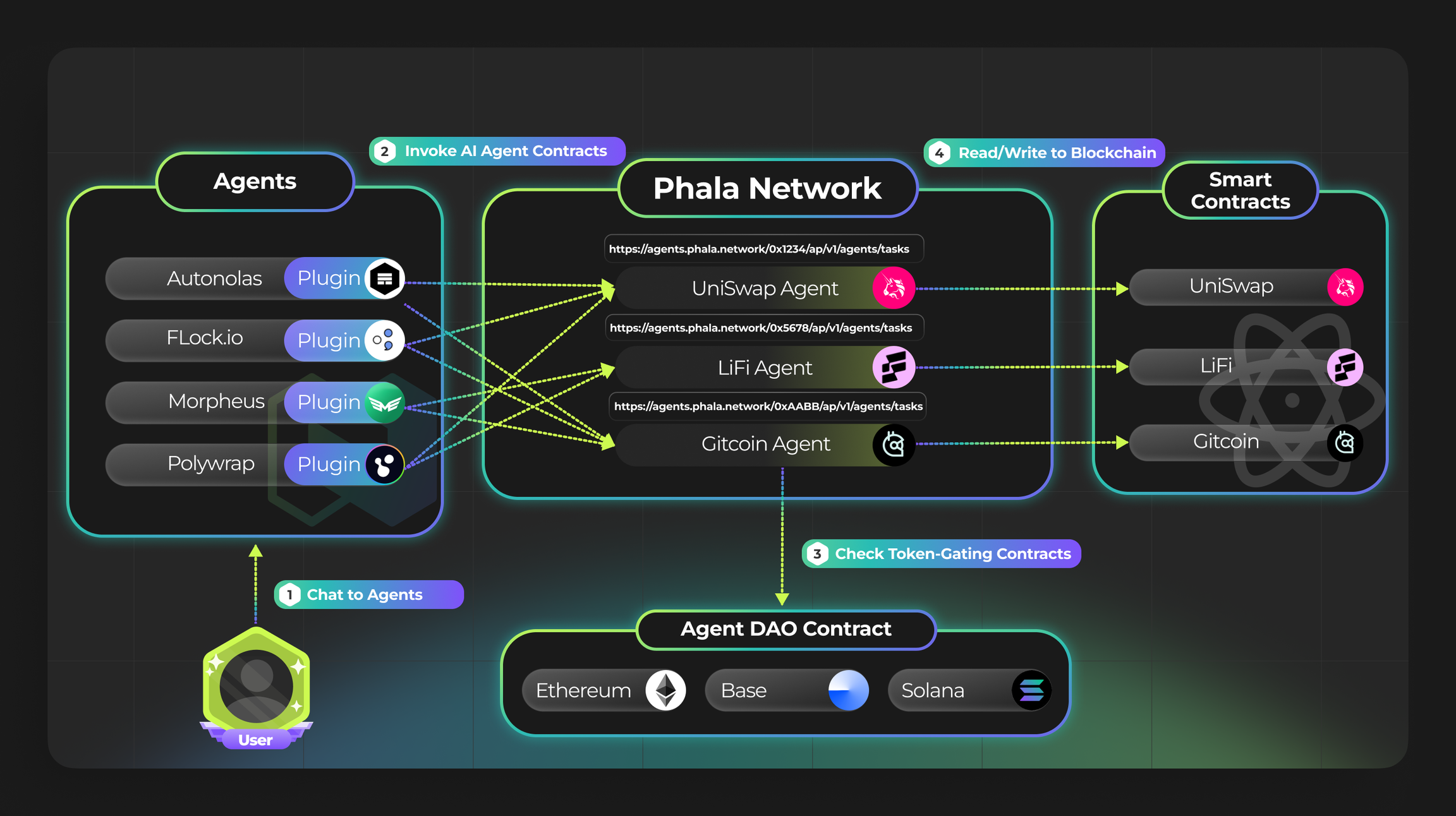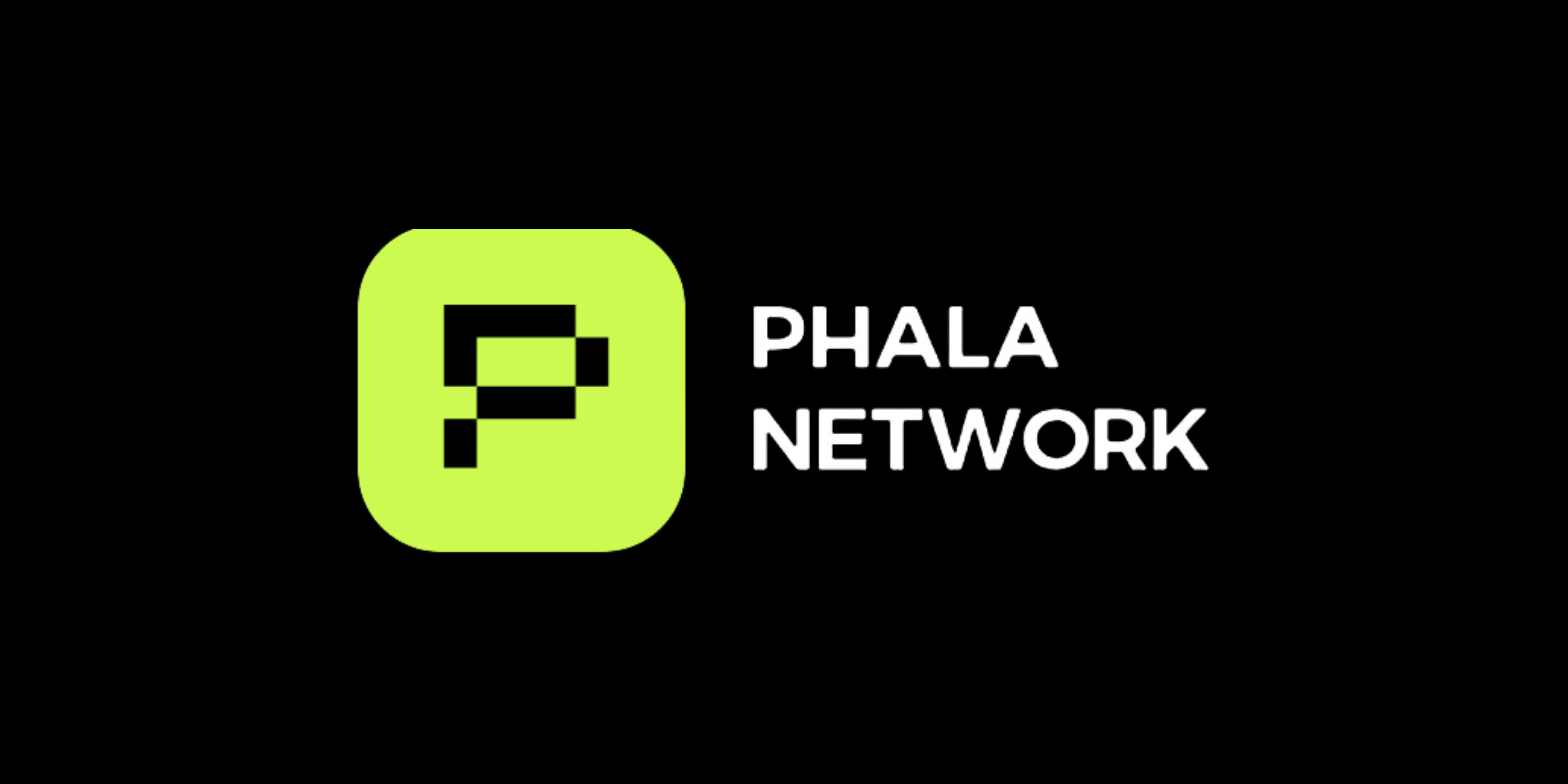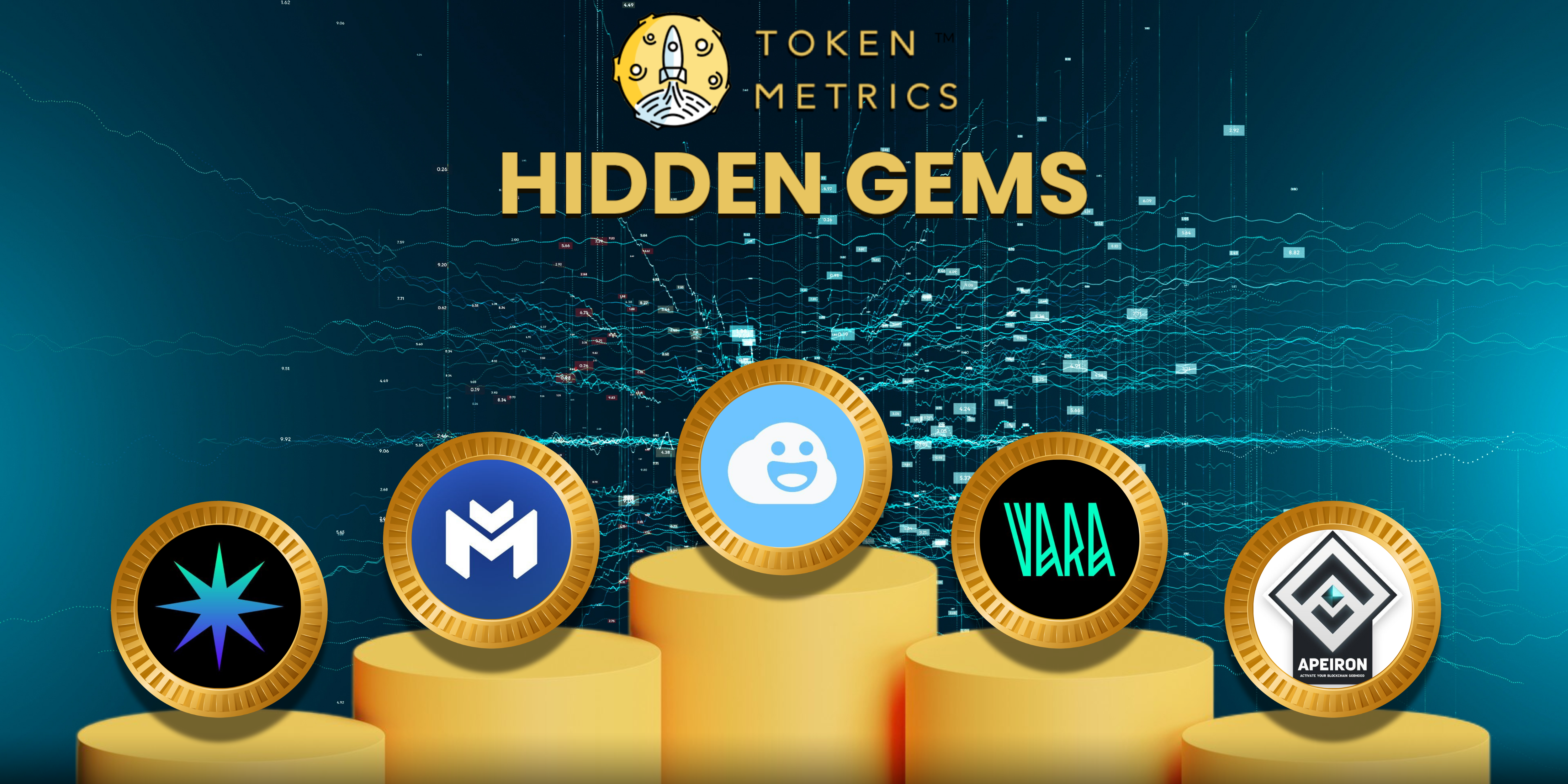Executive Summary
Phala Network is a decentralized execution layer that is purpose-built to integrate artificial intelligence with blockchain technology. It seeks to enhance and streamline user experiences within the Web3 ecosystem by enabling direct interactions between AI and blockchains. This integration facilitates the creation of intelligent, autonomous agents capable of securely and efficiently executing complex tasks. Phala Network’s AI Execution Layer bridges the divide between AI and blockchain, allowing AI agents to undertake tasks that would traditionally require manual operations across multiple decentralized applications (dApps) and blockchains. Built on the Phala Network, developers can construct tamper-proof and unstoppable AI agents tightly integrated with on-chain smart contracts. Phala provides a comprehensive toolkit, empowering developers to build, deploy, and monetize smart contract-centric AI agents effectively.
About the Project
Vision – To be the Execution Layer for Web3 AI and make it easier for people to enter the Web 3 World.
Problem – The current Web 3 ecosystem is complex. Completing a basic task in the blockchain ecosystem often requires multiple wallets across various blockchains and decentralized applications (dApps). Current AI agents are primarily centered around smart contracts. However, their off-chain nature prevents them from executing smart contract operations securely and autonomously. This limitation hinders the potential for streamlined and efficient processes within the blockchain environment.
Solution – Phala Network’s AI Execution Layer bridges the gap between AI and blockchain, enabling AI agents to autonomously perform tasks that would otherwise require manual interactions across various dApps and blockchains. This innovation simplifies and enhances the efficiency of operations within the blockchain ecosystem. AI agents that are seamlessly integrated with on-chain smart contracts
Phala Network Features

- Decentralized Network – The rising demand for AI agents requires a robust and decentralized network to support complex, off-chain computations, ensuring scalability and adaptability. Phala Network’s decentralized, serverless cloud infrastructure, backed by over 30,000 computer nodes worldwide, can host over a million AI agents. This makes it an ideal ecosystem for a thriving AI-agent marketplace capable of meeting current and future demands.
- Integrating Smart Contracts – Integrating smart contracts with large language models (LLMs) opens new opportunities for liquidity and innovation in the AI sector, enabling more intelligent and responsive AI agents. Phala’s AI-Agent Contract allows seamless integration with blockchain networks, enabling AI agents to access and interact with data across various blockchains. This facilitates transactions, asset management, and services.
- Supporting leading LLMs – Utilizing advanced LLMs like GPT-4, Claude, and Llama keeps the ecosystem at the forefront of AI development. Phala’s AI-Agent Contract supports these top-tier LLMs, providing full API access and integrating payment mechanisms, ensuring a broad spectrum of AI functionalities within the network.
- Autonomous Multi AI-Agent Collaboration – Autonomous collaboration among multiple AI agents enhances efficiency and effectiveness in executing complex tasks. Phala’s AI-Agent Contract enables seamless communication and collaboration among AI agents, fostering innovation and efficiency in the AI-agent economy.
- Confidentiality at Its Core – Data privacy is crucial for user trust and security, especially for AI agents handling sensitive information. Using Trusted Execution Environments (TEE), Phala Network ensures unparalleled data privacy, setting a new standard for secure AI-agent operations.
Market Analysis
Cryptocurrency has brought a completely new realm of finance, with its current market cap at $2.6T. This rapidly growing market is characterized by emerging narratives and innovative protocols highlighting the crypto world’s diverse use cases and optimistic outlook.
Among these narratives, the AI sector is a promising area expected to experience explosive growth in the coming years. The global artificial intelligence market reached $196.63B in 2023 and is projected to grow at a compound annual growth rate (CAGR) of 37.3% from 2023 to 2030. The intersection of crypto and AI has seen significant expansion in recent years, positioning it for further growth.
Phala Network is striving to make Web3 more accessible by providing the necessary tools and framework for the creation, operation, and growth of AI agents within a blockchain-enabled environment. As the AI agent narrative becomes increasingly crowded with numerous projects emerging in this space, Phala Network faces competition from major players such as Fetch.ai. However, by simplifying access and enhancing functionality, Phala Network aims to distinguish itself in this competitive landscape.
Token
The native token of Phala Network, $PHA, is integral to the ecosystem’s functionality and operations. Compute providers receive $PHA as a reward for their contributions, incentivizing participation and ensuring robust computational power within the network. $PHA has a maximum supply of 1 billion. Additionally, $PHA is required to run AI Agent Contracts, which underpin the execution and operation of AI-driven tasks.
$PHA holders actively participate in decision-making processes and facilitate the Phala Network’s governance. By holding and using PHA, these participants influence network policies and directions through a decentralized autonomous organization (DAO) structure. Moreover, $PHA can be staked or delegated, contributing to the network’s security while allowing participants to earn additional rewards for their support.
Traction

Phala Network has made significant progress, demonstrating notable traction within its ecosystem. The network has successfully processed over 100 million transactions, showcasing its robust infrastructure and capability to handle high activity volumes.
In addition to the impressive transaction count, Phala Network boasts a community of 34,000 active workers. This level of engagement underscores the network’s utility and the adoption of its platform. Phala has also partnered with all the major chains, such as Polygon and Arbitrium and integrated with Web 3 protocols.
Team
Hang Yin is the founder. He was the lead developer of Bitcoin Gold and has experience working with Google. Another key member is Marvin Tong, a senior product manager with extensive experience from his tenure at Tencent. Together, their diverse expertise and backgrounds have significantly contributed to the development and success of Phala Network.
Where can you buy the token?
$PHA can be brought from exchanges like Binance, Kraken, OKX, Kucoin, Uniswap etc.
Conclusion
The introduction of the AI-Agent Contract marks a significant milestone in integrating Web3 and artificial intelligence. Phala Network spearheads this advancement by addressing pressing needs, offering innovative solutions, and envisioning a future where Web3 is smarter, more secure, and more user-centric. While Phala Network aims to bring a novel element to the AI landscape, it also faces increasing competition from many emerging projects in the same domain.
| Fundamental Analysis | |||||
| Assessment | |||||
| Problem | Moderate, somewhat persistent problem | 2 | |||
| Solution | Some uniqueness, moderate defensibility | 2 | |||
| Market Size | Large market, significant growth potential | 3 | |||
| Competitors | High competition, but room for differentiation | 2 | |||
| Unique Value Proposition | Clear differentiation and value for customers | 3 | |||
| Current Traction | Early traction, user engagement starting to grow | 2 | |||
| Unit Economics | Break-even or slightly positive unit economics | 2 | |||
| Tokenomics | Solid token strategy, aligns with user incentives | 3 | |||
| Product Roadmap | Clear roadmap, innovative and achievable milestones | 3 | |||
| Business Model | Proven business model with clear path to profitability | 3 | |||
| Go-to-Market Strategy | Basic GTM strategy, lacks detail or differentiation | 2 | |||
| Regulatory Risks | Minimal regulatory risk, strong mitigation and adaptability | 4 | |||
| Total | 64.58% | ||||





